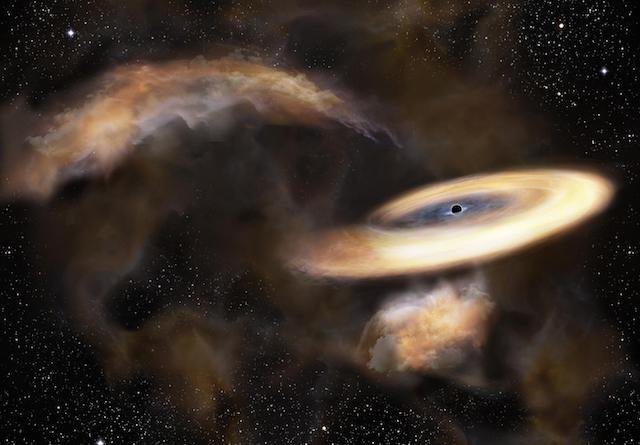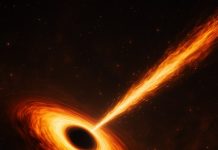
In a new study, researchers found a hidden black hole from its effects on an interstellar gas cloud.
The findings may help scientists understand the growth and evolution of black holes.
The research was conducted by a team at the National Astronomical Observatory of Japan.
Black holes are objects with very strong gravity. They could suck everything, including light.
Because black holes do not emit light, scientists need to use the effects of their gravity on other objects to infer their existence.
Black holes have various mass, ranging from 5 times of the Sun to millions of times of the Sun.
In the current study, the team observed a strange gas cloud moving near the center of the Galaxy 25,000 light-years away from Earth in the constellation Sagittarius.
Using ALMA, they found the gas cloud is swirling around an invisible massive object.
The team’s analysis showed an enormous mass (30,000 times that of the Sun) was concentrated in a region much smaller than the Solar System.
Because no object is found in that location, it is possible that an intermediate-mass black hole exists there.
The results are interesting because this intermediate mass black hole was only 20 light-years from the supermassive black hole at the Galactic center.
The researchers suggest this black hole is one of over 100 million quiet black holes expected to be lurking in our Galaxy.
The method in the study provides a new way to search for other hidden black holes. The team hopes to expose other quiet black holes by analyzing other anomalous clouds.
The lead author of the study is Shunya Takekawa.
The study is published in The Astrophysical Journal Letters.
Copyright © 2019 Knowridge Science Report. All rights reserved.
Further reading: The Astrophysical Journal Letters.



